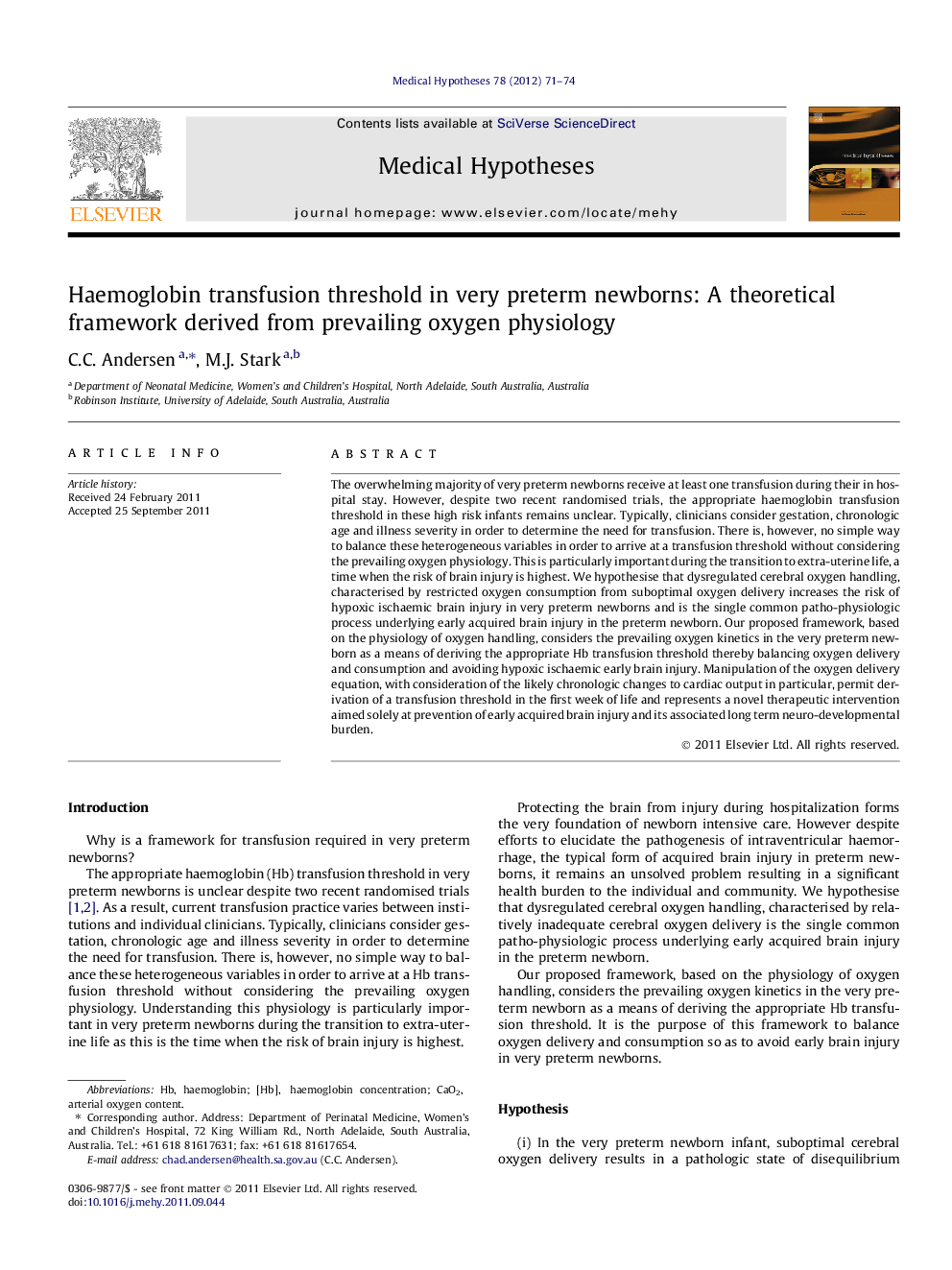| Article ID | Journal | Published Year | Pages | File Type |
|---|---|---|---|---|
| 5812778 | Medical Hypotheses | 2012 | 4 Pages |
The overwhelming majority of very preterm newborns receive at least one transfusion during their in hospital stay. However, despite two recent randomised trials, the appropriate haemoglobin transfusion threshold in these high risk infants remains unclear. Typically, clinicians consider gestation, chronologic age and illness severity in order to determine the need for transfusion. There is, however, no simple way to balance these heterogeneous variables in order to arrive at a transfusion threshold without considering the prevailing oxygen physiology. This is particularly important during the transition to extra-uterine life, a time when the risk of brain injury is highest. We hypothesise that dysregulated cerebral oxygen handling, characterised by restricted oxygen consumption from suboptimal oxygen delivery increases the risk of hypoxic ischaemic brain injury in very preterm newborns and is the single common patho-physiologic process underlying early acquired brain injury in the preterm newborn. Our proposed framework, based on the physiology of oxygen handling, considers the prevailing oxygen kinetics in the very preterm newborn as a means of deriving the appropriate Hb transfusion threshold thereby balancing oxygen delivery and consumption and avoiding hypoxic ischaemic early brain injury. Manipulation of the oxygen delivery equation, with consideration of the likely chronologic changes to cardiac output in particular, permit derivation of a transfusion threshold in the first week of life and represents a novel therapeutic intervention aimed solely at prevention of early acquired brain injury and its associated long term neuro-developmental burden.
